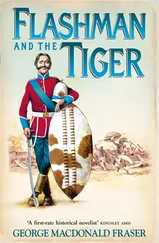Vince Houghton - Nuking the Moon - And Other Intelligence Schemes and Military Plots Left on the Drawing Board
Здесь есть возможность читать онлайн «Vince Houghton - Nuking the Moon - And Other Intelligence Schemes and Military Plots Left on the Drawing Board» весь текст электронной книги совершенно бесплатно (целиком полную версию без сокращений). В некоторых случаях можно слушать аудио, скачать через торрент в формате fb2 и присутствует краткое содержание. Город: New York, Год выпуска: 2019, ISBN: 2019, Издательство: Penguin Books, Жанр: История, Юмористические книги, на английском языке. Описание произведения, (предисловие) а так же отзывы посетителей доступны на портале библиотеки ЛибКат.
- Название:Nuking the Moon: And Other Intelligence Schemes and Military Plots Left on the Drawing Board
- Автор:
- Издательство:Penguin Books
- Жанр:
- Год:2019
- Город:New York
- ISBN:978-0-5255-0517-4
- Рейтинг книги:4 / 5. Голосов: 1
-
Избранное:Добавить в избранное
- Отзывы:
-
Ваша оценка:
- 80
- 1
- 2
- 3
- 4
- 5
Nuking the Moon: And Other Intelligence Schemes and Military Plots Left on the Drawing Board: краткое содержание, описание и аннотация
Предлагаем к чтению аннотацию, описание, краткое содержание или предисловие (зависит от того, что написал сам автор книги «Nuking the Moon: And Other Intelligence Schemes and Military Plots Left on the Drawing Board»). Если вы не нашли необходимую информацию о книге — напишите в комментариях, мы постараемся отыскать её.
Nuking the Moon: And Other Intelligence Schemes and Military Plots Left on the Drawing Board — читать онлайн бесплатно полную книгу (весь текст) целиком
Ниже представлен текст книги, разбитый по страницам. Система сохранения места последней прочитанной страницы, позволяет с удобством читать онлайн бесплатно книгу «Nuking the Moon: And Other Intelligence Schemes and Military Plots Left on the Drawing Board», без необходимости каждый раз заново искать на чём Вы остановились. Поставьте закладку, и сможете в любой момент перейти на страницу, на которой закончили чтение.
Интервал:
Закладка:
So it was ARPA or nothing.
One of the benefits of government funding was the ability to start small-scale testing. In 1959, the Orion team began to test some of the theoretical concepts to see if they worked in practice. The initial tests, sarcastically nicknamed “Putt Putt,” involved detonating small balls of plastic explosive under jerry-rigged spaceship models made out of things like metal mixing bowls the team had bought from the local grocery store. By November they had moved on to more realistic testing of a true scale model of what might someday be the Orion spacecraft.
It was called “Hot Rod,” and it was 7 feet tall and 3.3 feet in diameter. Just like the real Orion would, Hot Rod was equipped with a pusher plate and a spring shock absorber. In the test, six successive detonations of high-powered plastic explosive pushed the model 184 feet into the air. After twenty-three seconds of flight, the test vehicle parachuted back to the ground. The concept worked, and it was cause for celebration.
At least until 1960, when ARPA decided it had had enough of Orion and dumped the program.
This forced the General Atomics team to go hat in hand to the U.S. Air Force to try and get it to pick up the project. To their relief, the Air Force said yes—the project was just too tantalizing to let go—but this presented both parties with new and particularly tricky complications. For one, the Air Force was prohibited from funding nonmilitary projects, so the Orion team found themselves all of a sudden working on a “military” spacecraft. This was total nonsense, but it meant that those on the project would have to at least nominally try to find a direct military requirement that Orion could fill.
During the Kennedy administration, this was especially difficult. Secretary of Defense Robert McNamara, who controlled the Pentagon’s purse strings, was no idiot when it came to evaluating the efficacy of military projects (we won’t get into his ability to evaluate Southeast Asian insurgent movements). McNamara could see that Orion was designed solely for interplanetary space exploration, not warfare. To his credit, he didn’t order the Air Force to cut the program outright, but he continually refused to allow it to increase Orion’s budget or expand the project beyond the small-scale testing stage, which would require experiments with nuclear weapons.
In the end, however, it was a geopolitical consideration that might have contributed most to the demise of Project Orion. In 1963, the governments of the United States, the Soviet Union, and the United Kingdom signed the Treaty Banning Nuclear Weapon Tests in the Atmosphere, in Outer Space and Under Water, otherwise known as the Limited Test Ban Treaty. Finalized in the wake of the Cuban Missile Crisis, the treaty would, at least temporarily, begin to rein in the Cold War arms race, which was alarmingly spiraling out of control. Which is a noble cause—unless, of course, you need nuclear weapons to propel your cool spaceship.
The Orion team could continue to do Putt Putts and Hot Rods, but not much else. Not without NASA’s help, anyway. And NASA had no intention of getting involved.
I should really qualify that statement: There were some in NASA who thought Orion was a great idea. Wernher von Braun, former Nazi rocket scientist and a key member of the brain trust behind NASA’s manned space program, in 1964 wrote a report advocating for Orion, called Nuclear Pulse Propulsion—Its Potential Value to NASA . Others, particularly within the engineering community at NASA, expressed interest as well.
But it was not enough to save the program, which was formally canceled by the Air Force in June 1965. The leadership of NASA didn’t like the nuclear weapons component of the project, nor were they enamored by Orion’s increasingly high level of classification. NASA leadership was committed to the Apollo program, which planned to use the Saturn V rocket to send Americans to the moon. They were also shrewd political animals. They understood that the public might be terrified by the idea of using nuclear weapons to propel a spacecraft (even if this might have been an irrational fear, it still had to be taken into consideration). Without public support, NASA could find itself cut off from needed congressional funding.
The game was up. No bucks, no Buck Rogers.
AND THEN WHAT?
Let’s go back to the Aircraft Nuclear Propulsion program for a moment. Despite what I wrote earlier, this program wasn’t a complete disaster. Some of the high-temperature materials developed during the project, as well as some key data it produced on radiation shielding, were used later by NASA for the space program.
And despite its failure, the promise of the ANP has inspired some modern scientists to advocate for a reevaluation of the potential benefits of airplanes powered by nuclear energy, particularly as we now know more and more about the environmental impact of fossil fuels.
Let’s not get ahead of ourselves, though. The likelihood that we will book a trip to Albuquerque on a nuclear-powered airplane in our lifetime is slim to none. There are still significant problems to overcome, including the question of how to effectively shield the passengers from radiation without adding a huge amount of weight to the airframe. Then there are the flight attendants and the pilots, who would be exposed to higher levels of radioactivity on each and every flight. Finally, terrorism experts would probably have something to say about some of the potential problems associated with flying nuclear reactors…
The Hot Rod scale model was donated to the Smithsonian’s Air and Space Museum in 1972. It was on display for years, but now has been moved to the museum’s off-site storage facilities. But if you get a chance to visit the Air and Space annex in Chantilly, Virginia, known as the Steven F. Udvar-Hazy Center, you can check out a complete model of the Orion spacecraft. Give yourself some time to find it, however. Udvar-Hazy has hundreds of models on display.
Just keep your eyes peeled for the spaceship that looks like a pogo stick.
21.
PROJECT A119
The first televised professional football game aired on NBC on Sunday, October 22, 1939. It was played between the Brooklyn (football) Dodgers and the Philadelphia Eagles and held at Ebbets Field in front of more than thirteen thousand fans. The regional TV audience watched as coach Potsy Clark’s Dodgers beat Bert Bell’s Eagles 23-14. The game was tied at 7 at the half, after Pug Manders punched in a one-yard touchdown for Brooklyn and Fran Murray’s one-yard scamper evened things up for the Eagles. But the scrappy Dodgers pulled ahead for good after scoring 10 points in the third quarter. By today’s standards, this would have been a horrendously boring game. Each quarterback threw three interceptions, and Philadelphia’s grand total of rushing yards was a whopping 28. This wasn’t exactly a shootout between Aaron Rodgers and Tom Brady.
(But I imagine the ball was properly inflated.)
The first televised football game I watched came more than forty years later. In 1982, Super Bowl XVI pitted the San Francisco 49ers against the Cincinnati Bengals. I was five years old, and I really didn’t care who won the game. The team I would follow for the entirety of my conscious life wouldn’t play again in the Super Bowl until the following year, when the Dolphins lost Super Bowl XVII to the Washington [racial slur redacted]. Two years later, the Dolphins would continue this trend and lose Super Bowl XIX to the 49ers. At the time I was annoyed that my team had lost two Super Bowls in three years. Today I would give my left arm for that kind of futility.
San Francisco beat Cincinnati 26-21 in Super Bowl XVI, and unless you are a fan of either of those teams you probably don’t remember a lot about that game. But if you watched it live, you might remember something interesting about the telecast. For the first time on national TV, John Madden, the former NFL coach turned TV broadcaster, analyzed plays throughout the game by drawing diagrams on the screen ! I thought this was cool, but I didn’t know how revolutionary it really was. My father, and those of his generation, were wondering what voodoo magic Madden had conjured up. How could he be drawing lines and circles over a video image that had been recorded just seconds earlier?
Читать дальшеИнтервал:
Закладка:
Похожие книги на «Nuking the Moon: And Other Intelligence Schemes and Military Plots Left on the Drawing Board»
Представляем Вашему вниманию похожие книги на «Nuking the Moon: And Other Intelligence Schemes and Military Plots Left on the Drawing Board» списком для выбора. Мы отобрали схожую по названию и смыслу литературу в надежде предоставить читателям больше вариантов отыскать новые, интересные, ещё непрочитанные произведения.
Обсуждение, отзывы о книге «Nuking the Moon: And Other Intelligence Schemes and Military Plots Left on the Drawing Board» и просто собственные мнения читателей. Оставьте ваши комментарии, напишите, что Вы думаете о произведении, его смысле или главных героях. Укажите что конкретно понравилось, а что нет, и почему Вы так считаете.











